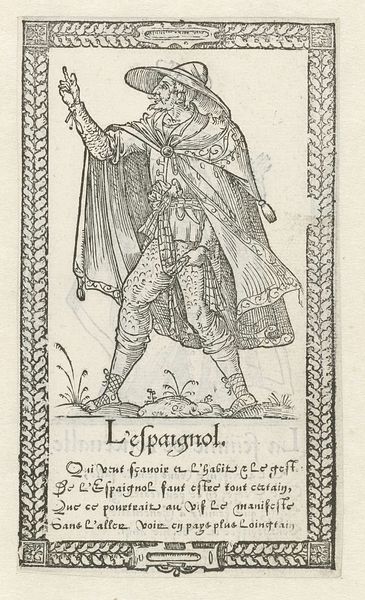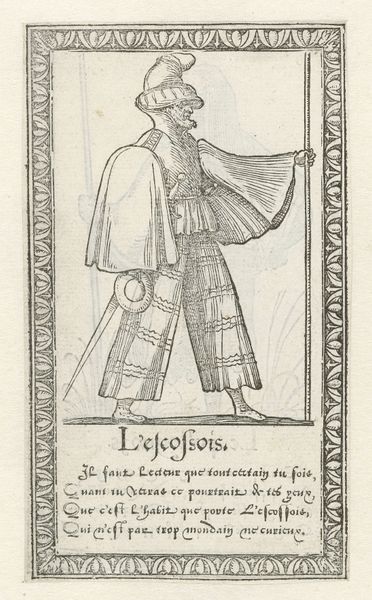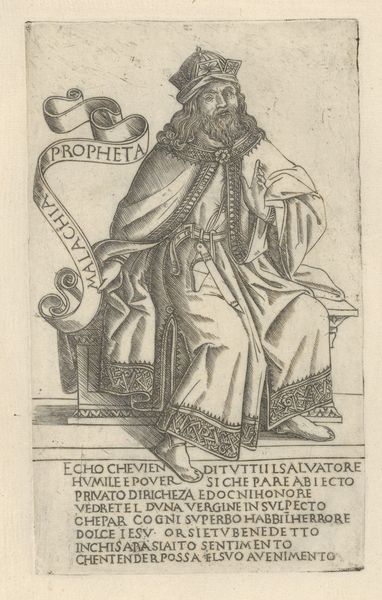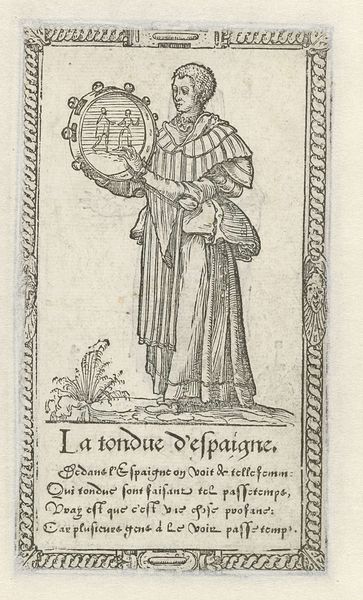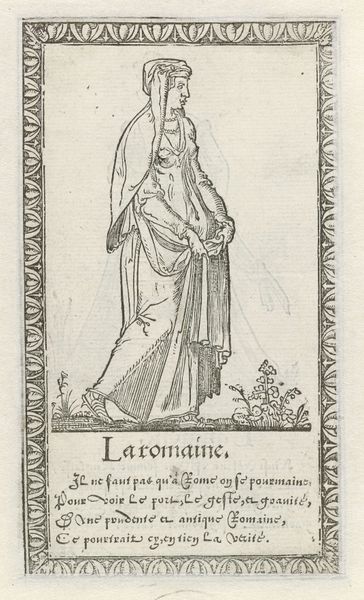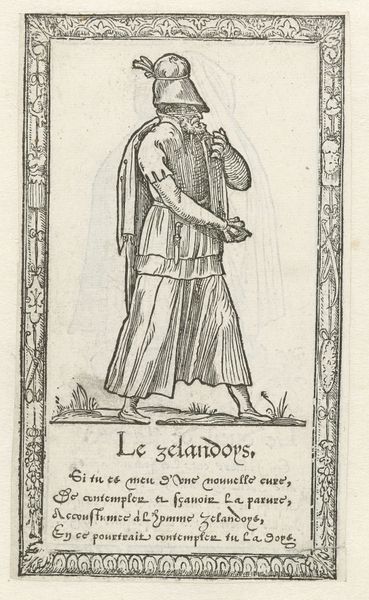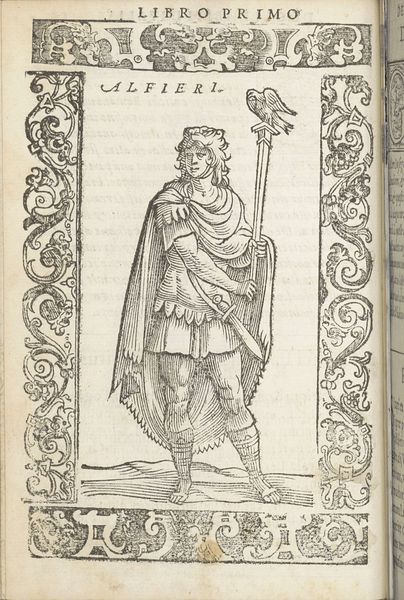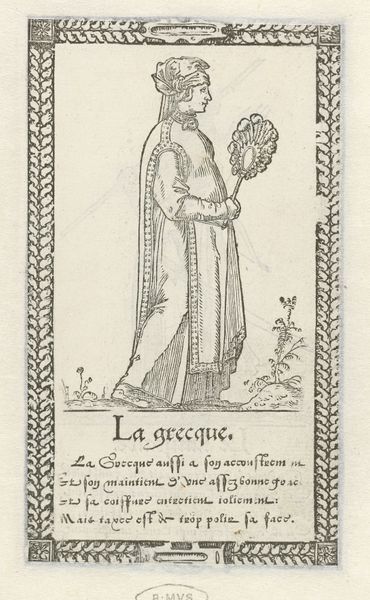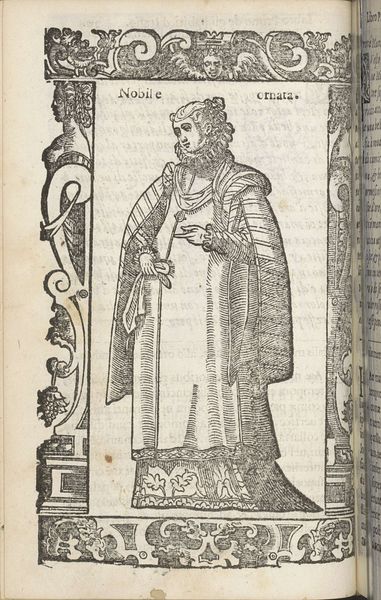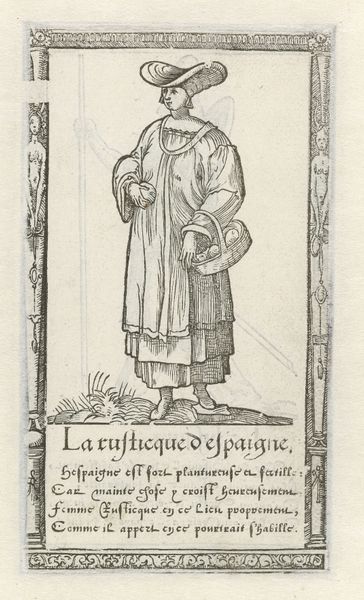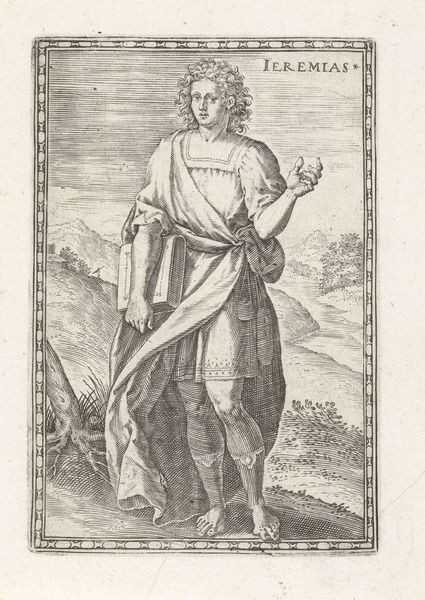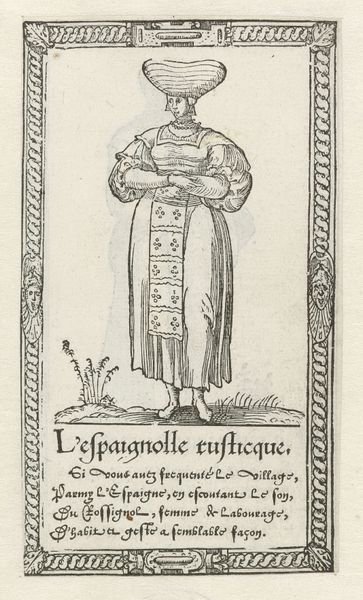
drawing, print, engraving
#
portrait
#
drawing
# print
#
mannerism
#
history-painting
#
engraving
Dimensions: height 147 mm, width 85 mm
Copyright: Rijks Museum: Open Domain
This print, "Man uit een Arabisch land," was made in the 16th century by François Desprez, using the technique of engraving. The medium of engraving is significant here. Desprez would have used a tool called a burin to carve lines directly into a copper plate, a labor-intensive process demanding great skill. The network of hatched lines creates the image, which depicts a man in what the artist imagines to be traditional Arabic dress. The sharp, precise lines lend a sense of clarity and detail to the figure, emphasizing the texture of the fabrics and the contours of his form. Engraving was a key technology in the early modern era, allowing images and information to be disseminated widely. So, this print is not just a portrait, but also an example of how Europeans perceived and represented people from other cultures during this period of increasing global interaction. Considering the materials, making, and cultural context is crucial to understanding the print's full meaning.
Comments
No comments
Be the first to comment and join the conversation on the ultimate creative platform.
